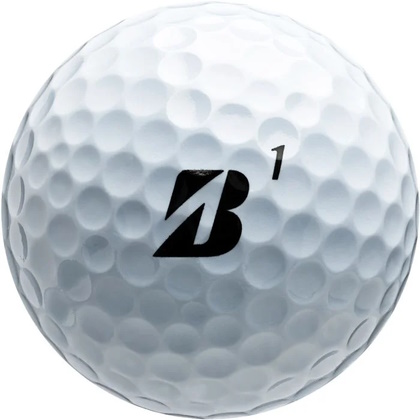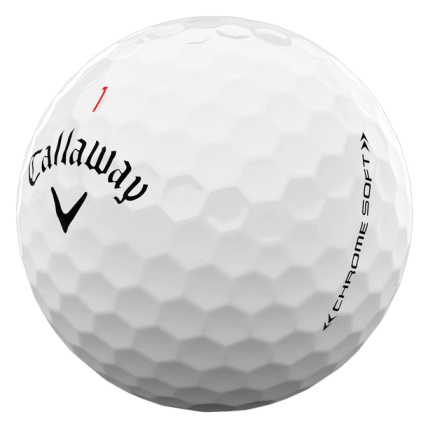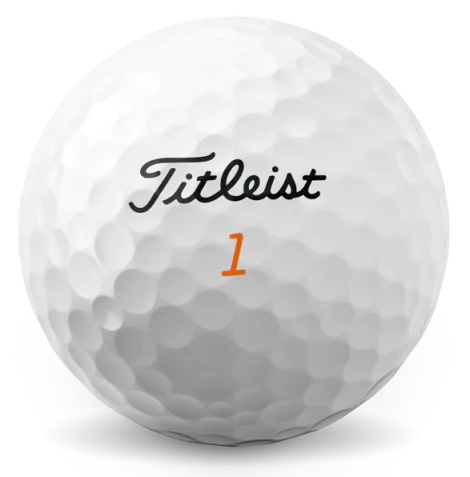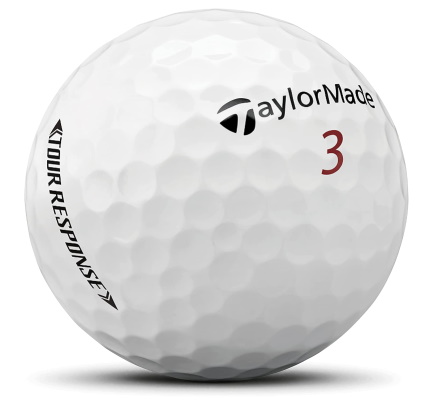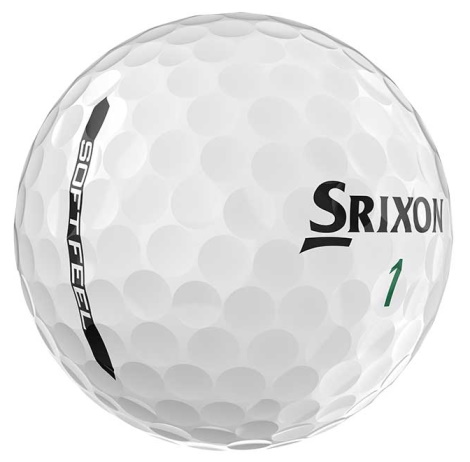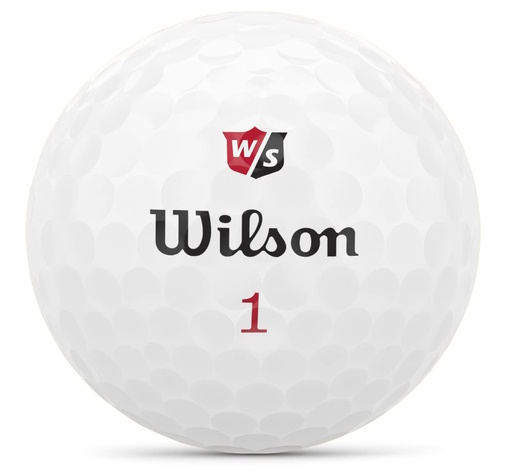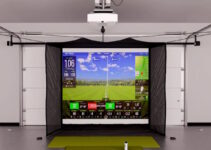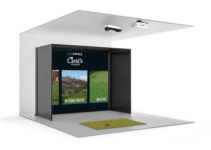Golfstead is reader-supported. When you buy through links on the site, we may earn an affiliate commission at no extra cost to you. Our affiliations include, but are not limited to, the eBay Partner Network and Amazon Associates.
As the only piece of equipment you use on every single shot, the golf ball is crucial to your success as a golfer. It’s important to play a quality ball that suits your swing and your style of play.
At the end of the day, it’s tough to narrow down a golf ball that would suit all mid handicappers. This is because every mid handicapper is unique with different swing speeds, trajectories, and goals.
But generally speaking, most mid handicappers have medium swing speeds and are looking for distance, some forgiveness, and good greenside control. In most cases, mid handicappers will benefit from a low to mid-compression ball.
The sheer number of options on the market can make the process of choosing the best golf ball for you difficult and overwhelming. Fortunately, you’ve come to the right place.
In this guide, we’ll review and compare our picks for the best golf balls for mid handicappers across a range of different brands.
Note: Golfstead has tested and/or conducted in-depth research into all of the products featured in this guide. Our editorial process for these rankings takes into account a mix of many factors which may include performance, reliability, usability, value for money, cost, and the general consensus from other users of the product. The list that follows may be reassessed or updated over time.
Our Top Picks For Golf Balls For Mid Handicappers
Based on our own testing, research, and experience, here are our top selections:
- Bridgestone e6 Golf Ball
- Callaway Chrome Soft Golf Ball
- Titleist Velocity Golf Ball
- TaylorMade Tour Response Golf Ball
- Srixon Soft Feel Golf Ball
- Vice Tour Golf Ball
- Wilson Duo Soft Golf Ball
- Callaway Supersoft Golf Ball
1. Bridgestone e6 Golf Ball
Bridgestone is a renowned golf ball manufacturer, represented by some of the best golfers in the world including Tiger Woods, Bryson DeChambeau, Fred Couples and Lexi Thompson.
Their e6 ball has been around for over 14 years and, with each iteration, has gradually evolved into a soft, affordable distance ball. The latest e6 has optimized its soft feel even further and is designed to produce a softer sound as well.
Engineered to be easy to compress, easy to launch, and produce maximum distance on all shots, the e6 has a two-piece construction consisting of:
- a reformulated gradational compression core, firmer on the outside and softer on the inside, that compresses quicker for added distance
- a Surlyn cover with seamless cover technology that optimizes feel and spin
The 330 dimple pattern helps maximize carry as well as provide good spin control around the greens.
The 2023 model is currently available in white and optic yellow. The e6 is generally a very popular best-seller, and the consensus is that it delivers excellent tee-to-green performance for the price.
2. Callaway Chrome Soft Golf Ball
The Callaway Chrome Soft has been an extremely popular golf ball for many years. It enjoys a high average rating on the Callaway store.
The Chrome Soft has a soft feel with a medium compression rating of 70, and is suitable for every type of golfer including mid handicappers.
This ball is designed to perform optimally from tee to green, meaning big distance off the tee, high launch with irons, and lots of spin control around the greens. The ball is also engineered for forgiveness and tight dispersions.
The latest iteration of the Chrome Soft has a three-piece construction consisting of a mantle layer and:
- a new hyper-elastic SoftFast Core for optimal compression and performance through the bag
- a soft urethane cover for feel and control
The standout technology of the new Chrome Soft is Callaway’s Precision Technology. This allows ultra-precise design manufacturing down to 1/1000 of an inch, resulting in faster ball speed, tighter dispersions, and better overall performance.
The Chrome soft also employs a HEX Tour Aero dimple design meant to maximize carry and minimize drag.
Golfers find the 2022 Chrome Soft to be a marked improvement over previous iterations, delivering even better greenside control, better feel, and better distance.
3. Titleist Velocity Golf Ball
As the name implies, the Titleist Velocity is all about speed. It’s engineered for maximum ball speed, high launch and low spin, which is a recipe for monstrous distance.
We feature this model high on our list because it gives many mid handicappers the distance they crave and because it has a nice mid-range compression rating of 65.
The Velocity ball has a two-piece construction consisting of:
- a new high-speed LSX core that produces faster speed with the longer clubs
- a proprietary NaX+ cover that reduces spin but also enables greenside playability
The Velocity ball has a 350 octahedral dimple design that is spherically tiled. This design helps promote a high and consistent trajectory.
At the time of writing, the Velocity ball is available in white, but matte blue, green and orange colours will be rolled out later in 2022.
Golfers can vouch for the huge distance of the Velocity, and the firm feel and control of the ball are also praised. However, the distance, low spin and firmness also cause it to suffer a little around the greens.
4. TaylorMade Tour Response Golf Ball
The TaylorMade Tour Response ball allows you to experience Tour performance with a softer feel and a lower price tag. Its compression rating of 70 opens the door to mid handicappers who lack a super-fast swing speed.
The Tour Response ball has a three-piece construction consisting of:
- a Hi-Spring Core designed to maximize energy transfer and ball speeds at impact
- a proprietary Speedmantle with High Flex Modulus (HFM) which acts as a firmer second layer around the core that helps the ball explode off the face
- a soft, cast urethane cover formed by a crosslinking chemical reaction, the end result of which is improved durability, shear resistance, and spin around the greens
The soft nature of the Tour Response helps the grooves of shorter irons grab the ball and produce spin, while at the same time, a new Tour Flight Dimple Pattern (found in the TP5 Tour balls) promotes maximum carry distance with the long clubs.
This ball is available in white and yellow, and it’s also available in a special stripe pattern (Tour Response Stripe balls) that helps with putt alignment and roll feedback.
The Tour Response golf ball is intended for very low driver spin, high launch, low iron spin, and high wedge spin. To see what people are saying about it, check out this page.
5. Srixon Soft Feel Golf Ball
The Srixon Soft Feel, a very successful ball that has earned high marks from critics, provides incredible softness, excellent distance off the tee, and solid spin control around the greens. It has a fair 60 compression rating that is ideal for mid handicappers.
The 13th generation of the Soft Feel introduces the latest iteration of Srixon’s FastLayer Core, which is the same core used in their premium balls. This technology reduces long-game sidespin, but at the same time, provides perfectly soft feel from tee to green.
This ball has a two-piece construction consisting of:
- a reformulated FastLayer Core that transitions from a soft inner core to a firmer outer edge. This core snaps back to shape after impact more quickly than ever, producing more ball speed.
- a soft, thin ionomer cover that increases spin with wedges and provides a softer feel on short game shots.
The Soft Feel features Srixon’s proprietary 338 Speed Dimple pattern. This pattern works to reduce drag, increase launch, and help the ball go farther and straighter with a more penetrating flight.
The ball is also available in the Soft Feel Lady variant and in colours Tour Yellow and Pink.
We find that the Soft Feel tends to do particularly well with senior golfers. Overall performance is really great, but spin around the greens isn’t quite on the level of a Tour ball. The alignment marking and affordability are a nice bonus.
6. Vice Tour Golf Ball
In spite of the “Tour” in the name, the Vice Tour ball is actually designed for all swing speeds and skill levels, so whatever your driver swing speed as a mid handicapper, you’re very likely to do well with it.
This ball is considered the “all-rounder” in Vice’s portfolio. It was featured in the golf.com performance golf ball recommendation list and benefits from high critic and consumer reviews.
With a mid compression rating (possibly 90 but not confirmed), the Vice Tour is engineered for outstanding distance off the tee and good spin and feel around the greens. Its three-piece construction consists of:
- an optimized Energy Speed Core (ESC) that improves durability, driver distance, and mid-iron spin
- a thin, flexible Surlyn mantle that reduces long-game spin and improves ball flight stability
- a mid-acid Surlyn cover that is extremely cut-resistant and durable
Other features of the Vice Tour are:
- a new 312 dimple design with increased dimple diameter, which stabilizes the trajectory and further reduces drag (and hence increases distance)
- a KIL alignment aid for better putting performance
According to swing robot tests at an independent laboratory, the Vice Tour surpasses the Titleist Tour Speed (a competitor) in ball speed, carry, and total distance, and it produces less driver spin.
The Vice Tour ball is at a great price point, and moreover, Vice has done a great job of achieving superb long game performance while maintaining an impressive amount of spin around the greens.
7. Wilson Duo Soft Golf Ball
Another one of the best golf ball brands out there today is Wilson. Their Duo Soft golf ball, formerly known as the Duo Soft+, is excellent for mid handicappers looking for a buttery soft feel, more distance, accuracy and consistency.
Updated for 2023, the two-piece ball has a low compression rating of 40, which is slightly higher than the 2020 model but still easy for slower swing speeds to compress at impact. Features include:
- a mid-hardness ionomer cover
- a 302 dimple pattern that helps improve launch
- a special core that is injected with a velocity-boosting peptizing agent, resulting in better energy transfer to the ball than ever before
- optimized aerodynamics for reduced driver spin
The Wilson Duo Soft ball is available in white, yellow, green, orange, red, and white/blue, as well as with optional printed logos of NFL teams, Michelob Ultra, and the Super Bowl LVII.
Golfers love the good distance, affordability, durability, superb feel from tee to green, and impressive spin around the greens considering it has an ionomer cover.
8. Callaway Supersoft Golf Ball
Callaway’s Supersoft ball is another terrific option for mid and high handicappers seeking soft feel. It has been an extremely popular golf ball for many years, the low compression rating of 38 allowing golfers with slower swing speeds to compress the ball and generate high ball speed.
The Supersoft isn’t just soft, though; it’s also fast, durable, and generates high launch and low long-game spin, all while maintaining excellent spin control around the greens.
Mid handicappers can struggle with hooks and slices, and the relatively low spin of the Supersoft will help take the edge off those bad shots.
The Supersoft has a two-piece construction consisting of:
- a HyperElastic SoftFast Core designed to enhance ball speeds while avoiding a firmer feel
- a refined Hybrid Cover that maximizes contact with the clubhead for improved wedge control
In addition, HEX Aerodynamics reduce drag and increase lift for more carry, distance, and stopping power into greens.
The Supersoft golf ball has stellar ratings on the Callaway store. We love its length off the tee, performance around the greens, and affordability compared to other balls.
Buying Guide
There are many golf balls on the market, and knowing which one to choose as a mid handicapper isn’t necessarily easy, especially if you’re not sure what to look for. This guide will provide you with the education you need in that regard.
In general, you want a golf ball that facilitates distance off the tee and that also provides control and spin around the greens.
If you want to find the right golf ball, here are the most important factors to consider:
1. Compression

The ability of a golf ball to compress is very important. This is quantified in something called the compression rating, and it usually ranges from around 30 to 120.
The lower the compression rating, the less club head speed is required to sufficiently compress the ball to produce a “rebound” affect that leads to more distance. Conversely, a high compression rating will require a higher club head speed to achieve sufficient compression of the ball.
A general rule of thumb is that a golfer should have a swing speed as close as possible to X mph to hit a ball with a compression rating of X. But this is often not accurate. For example, a ball might have a fairly low compression rating of 60 but be designed for higher swing speeds of around 100 mph.
Factors such as temperature can also affect the compressibility of a ball. Heat will tend to make a ball more compressible, while cold will make a ball less compressible.
Many mid handicappers have swing speeds been 80 and 95 mph, and thus would benefit from balls with low or medium compression ratings. This is why most of the balls featured on this page have these characteristics.
However, some mid handicappers have higher driver swing speeds and would benefit from a higher compression golf ball such as the Vice Tour. We have featured some balls that might accommodate this type of golfer as well.
2. Cover

The cover material of a golf ball can have a major impact on its performance. There are two main types of covers: Surlyn and urethane. Some people might consider ionomer, which includes Surlyn, as another type.
Generally, golf balls with ionomer or Surlyn covers are more durable, spin less, and fly a little farther. They also tend to be cheaper.
Golf balls with urethane covers generally spin more, provide a softer, more premium feel, and offer greater control and spin with the shorter irons.
Although this is the generalization, recent advancements in technology have helped urethane covers gain nearly all of the benefits of Surlyn covers. Today, the main drawback of urethane is a higher price and possibly less distance off the tee for slower swingers.
Most mid handicappers will be better suited to play balls with a Surlyn or ionomer cover because of the need for more distance off the tee, but some will appreciate the added control of a urethane cover.
3. Colours

Something many people might not think about is the colour (and finish) of the golf ball. A lot of golfers will automatically reach for the white ball, but as it turns out, that’s not necessarily the best option.
High-visibility golf balls are exactly the same as the standard white ball but come in a variety of colours including green, yellow, and orange. They may also have a matte instead of a glossy finish to reduce glare from sunlight.
Beyond providing an aesthetic flare that might suit your personality, the main purpose of coloured golf balls is to make it easier to not only keep track of the ball while it’s in the air, but also to spot the ball wherever it rests on the course.
In our experience, orange balls work very well for sunny, cloudless conditions during daytime, yellow balls work well in lower-light conditions, and green balls work well in overcast conditions.
It’s definitely worth checking if whichever model of golf ball you’re interested in is also available in high-visibility colours.
It’s certainly fine to just play a white ball if you want, but coloured balls can make your life a little easier, particularly if you have vision problems or if you’re a mid handicapper that tends to have trouble finding your ball.
4. Dimples
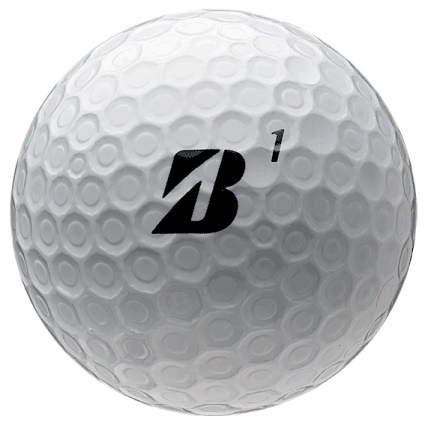
We definitely don’t recommend choosing a golf ball based on its dimples alone, but it’s worth knowing what their purpose is.
Most modern golf balls have between 300 and 400 dimples. Although golf ball manufacturers have their own ways of dimpling their balls, the goal is the same: to reduce drag and increase lift resulting in more distance.
Dimples are essential in order to get the aerodynamic performance expected from golf balls today, as opposed to smooth balls.
Beyond the number, dimples can also have difference shapes (such as spherical or hexagonal) and be arranged in different patterns.
It’s difficult if not impossible for the average golfer to predict the ultimate effect of a specific dimple configuration, so your best bet is to look at what the brand says about the dimples of a particular golf ball and consider if it matches the needs of your own game.
5. Price

Of course, price is very important when shopping for a golf ball.
Many people dislike spending $50 or more for a dozen of balls, and that’s completely understandable. Fortunately, mid handicappers may play just as good if not better with cheaper balls that cost under $30 a dozen.
Cheaper golf balls may have a simpler construction, have less feel, have sub-optimal energy transfer, or have generally inferior performance, but this is far from set in stone. In this guide, we’ve tried to include quality golf balls over a range of budgets that golfers might have.
Don’t forget that instead of buying new, you could save even more money by buying recycled balls on places like eBay. We recommend only looking at balls with condition ratings of AAA or above.
Conclusion
Woods and irons are one thing, but the golf ball you use can make a surprisingly big difference as to how well you play on the course.
When it comes to mid handicappers, it’s difficult to generalize them. Some swing slow, some swing fast, some need more spin, and some need less spin. The best generalization we can give is that they have low-to-mid swing speeds and are looking for an affordable ball with good all-around performance.
For this reason, mid handicappers often perform best with low or mid compression balls built for distance and greenside spin rather than shotmaking precision. Of course, not all mid handicappers fall into this category, and hence some will do better with a higher-compression Tour-level ball.
In any case, a golf ball that suits your game is a huge asset. And finding one that you like is actually pretty easy with a bit of knowledge and experimentation. We suggest trying several of the balls featured on this page and seeing which one performs best for you.
Each of the golf ball models listed above deliver exceptional performance for the cost. We’ve given you the information you need; now it’s up to you to go the rest of the way.
It’s also very beneficial to read customer reviews to acquire some useful insights as to how golf balls actually perform. This will help you a great deal in the decision-making process.
Thanks for reading this guide. Which golf ball are you interested in as a mid handicapper? Do you have any questions? Feel free to leave a comment down below.

